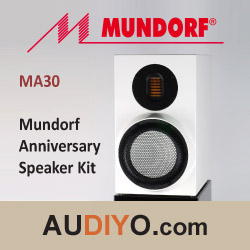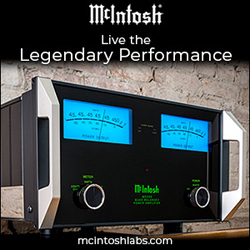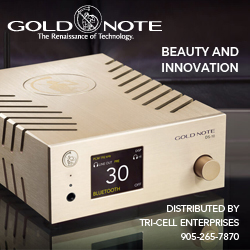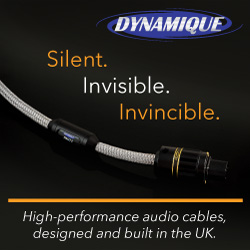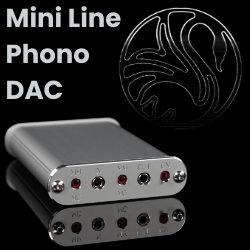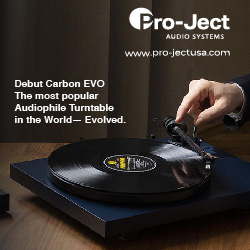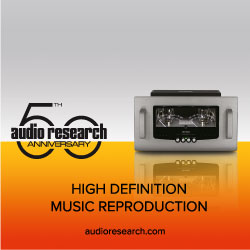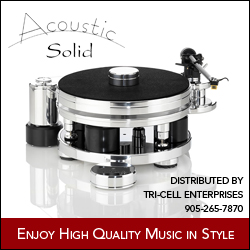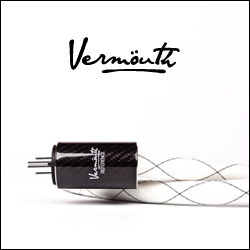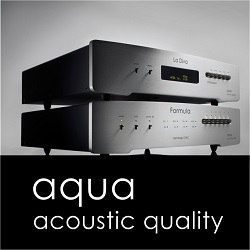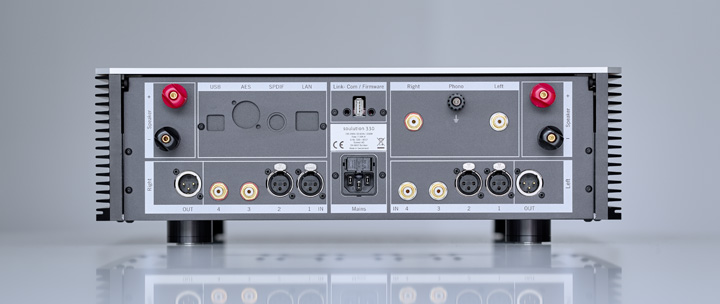
Rear panel of the Soulution Audio 330 Integrated Amplifier
Of course the Series 5 is not everything the Series 7 represents, and the Series 3 in turn cannot quite match the Series 5. The circuits (particularly in the power supply) are simpler, the gradations on the volume control not quite so precise, and the power in watts per channel is a small fraction lower. But the topology is identical, and the main economies come in two specific areas. One is the size of the box. The Series 3 components are smaller than Series 5, just as Series 5 comes in smaller boxes than Series 7. That saves money across the board, including packaging and shipping costs. The second and more significant factor is in the reserves of power available for instantaneous peak loads. Some high-end amplifiers are designed to produce clear output well beyond their rated power for very short periods of time. It is very expensive to engineer this capability to cope with the loudest explosive sounds of a full orchestra or a sudden cymbal crash. It requires significant power supply regulation capacitance and speed of action, plus massively over specified capacity in the power amp stages and cooling capacity to match. Although Series 3 has this ability in spades, Series 5 puts even that to shame, and Series 7 is out of this world in this regard. We are talking peak current output of 120A for the 711 STEREO, 45A for the 511 STEREO and 30A for the 330 INT. That’s where much of the additional expense lies as you go up the range. You can see this in the specifications, particularly in the storage capacity.
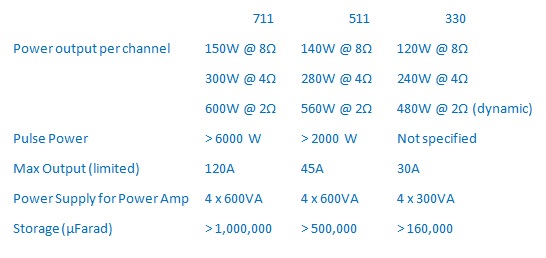
How will these power supply differences affect you? Probably very little, unless you are using inefficient speakers with extremely low impedance at certain frequencies. The 330 INT’s output into 2Ω is listed as 480W (limited) which means the amp is not comfortable driving a 2Ω load at sustained high levels, although its bigger brothers can do just that. Each of these amps can be used in bridged mode to power a single channel, providing higher sustained and peak output levels to each channel.
The stiff regulated power supplies result in remarkable impulse response and square wave reproduction which can be heard as effortless transient response with unlimited dynamics. This is one amp that can keep up with however fast and how widely the signal is changing. Weaker performance in these areas would be heard as lumpy or soft bass, unrealistic tone on stringed, reed and brass instruments and a general flattening of dynamics, a sense that the music has been compressed or held back. None of that here. The sound is full bandwidth, richly colorful and apparently unaffected by volume level. The extremely low noise level and the extraordinarily low distortion components allow details to emerge you’ve never heard before. Phase coherency in a system comprising equally highly resolving source and speakers also throws a three-dimensional image you can almost touch. The sound, while not exactly in your face, is certainly more forward than the one I’m used to through my reference amplification (EMM Labs Pre2 and ModWright KWA 150SE) and the instrumental color and detail retrieval more lifelike and exciting.
Now you may ask whether this sort of realism is always good for the music, so I spent many hours testing this setup over a wide range of music. The only problem I ran into was with poorly produced recordings. You can hear all the faults, and they can be quite grating. It reminded me of the Longfellow poem.
“There was a little girl,
Who had a little curl,
Right in the middle of her forehead,
When she was good
She was very good indeed,
But when she was bad she was horrid.”
That’s what you get when you build an extremely transparent amp and match it with similarly minded components. You get the truth. To illustrate this, I played two recordings of Beethoven’s Diabelli Variations, one from Paul Lewis and the other from Claudio Arrau. Arrau’s version on Philips dates from 1985 while Lewis was released on Harmonia Mundi in 2011. But don’t let that confuse you. The earlier recording is absolutely magnificent, Arrau’s famous tonal palette brilliantly captured, pulling me right into an immersive experience, while the later Lewis recording is shallow and thin toned and to these ears, an ordeal to sit through. The Arrau never sounded so right as through the 330 INT, while the Lewis never sounded so wrong.
The 330 INT encouraged me to pull out my best recorded material. Well recorded doesn’t only mean the best of modern recording techniques. There’s plenty of great analog recordings made from before the digital era. I even enjoyed the Hot Five and Hot Seven recordings from Louis Armstrong in the 1920s. They were surprisingly well recorded for the time. I think the engineers back then must have known this band was something special, and they pulled out all the stops to capture the very best sound they could. Can’t beat Potato Head Blues: https://www.youtube.com/watch?v=544wGNkZcm8 but you’ll need a really good CD version rather than YouTube or an MP3 to get the full measure of this track. Armstrong’s solo is clear, dramatic, full of startling rhythmic changes and more astonishing every time you play it.
I tried everything to catch this amplifier out. Playing really soft or really loud made no difference to the sound quality. There was never a hint of strain or a collapse of the 3D image. The bass is remarkable here, even next to my heavyweight reference, the ModWright KWA150 SE. While the ModWright is tuneful, well controlled, really quick and digs deep, the 330 INT goes a lot further on each of these qualities. More solid, more tuneful, and more coherent, it pulls stronger, most accurate bass out of the YG Carmel 2 speaker than I thought was possible. And this bass is the foundation of all sound, allowing the higher notes to work their magic over that strong support. It makes all music sound more realistic. I’m not saying more bass is always better. What matters is not the quantity of bass so much as its quality, the precise tuneful nature of the deep notes, the articulation, the lack of boom or bloat, the speed of response, the accuracy of the tail of each note, the powerful rhythmic centre. We are not just talking a plucked bass like in jazz, or the double basses of an orchestra or an organ’s longest pipes. All music has its lowest notes, and the fundamentals of those notes need to be reproduced accurately. Better missing in action than distorted, but better still, fully resolved. Many amps, particularly tube amps, have great success with the midrange, but few with the bass. Fewer still manage a clean extended and sweet high frequency performance, and most speakers are challenged to perform well in the highs. To hear the Carmel 2, which has a superb silk dome tweeter, in combination with the exceptional high frequency output of the 330 INT in Haitink’s superb performance of Shostakovich’s 5th Symphony is a royal treat. We have an abundance of detail, we feel the atmospherics, all delivered with a complete lack of edge. If ever there was an opportunity for listener fatigue, this music would provide it, but you won’t get it from the 330 INT, nor will you miss any of the delicate information your source can provide.
We are talking here of a staggeringly capable component that will not let you down no matter how much you spend on the rest of your equipment. It won’t flinch as you turn up the volume. I will not introduce hum or hiss. It can throw a giant soundstage. It can capture the female voice and the full weight of a grand piano equally well, and what it can do for classical music it can also do to jazz, folk, rock or world music. It is equally at home in all genres because it is honest to the source. It fully serves all of the audible frequencies equally well, preserving the phase relationships that tell the brain where each instrument sits in the soundstage. With a damping factor of over 5000, it exercises full control over the speakers so they achieve their full capability, starting and stopping on a dime. The massive reserves of power make sure that even in sudden transients, there is no compression of peak signals, providing unusually wide dynamics. All music is well served by these traits.
In terms of instrumental color, whether it’s Miles Davis, Eric Clapton or Evgeny Kissin, there is a thrill just to hear how clear each instrument stands out, even in a complex mix. You get the fundamentals, as we discussed, and you get the myriad overtones that distinguish an oboe from a clarinet, a flute from a whistle, so music takes on the color of the real thing. No, the Soulution 330 INT is not the only amplifier to do this, but the ability is notably rare, and when we hear it, we should make a fuss about it, because that’s what high end audio is all about, the pursuit of realistic reproduction of acoustic music. If you can get a wide range of acoustical instruments, and of course the human voice, to sound right, then electric guitar, synthesizers and all other amplified instruments will sound great too. Soulution is competing with Constellation Audio, Dan D’Agostino, Audio Research, Pass Labs, Boulder, CH Audio, Bricasti, Audionet, SimAudio, Ayre and numerous others. But for many of these competitors, an amplifier in this price range is their reference model, while for Soulution it is their entry level. You can move up from here, to the Series 5 or 7, to monoblocs or biamping. Soulution has you covered for the lucky day you win the lottery, or marry an oligarch.
Soulution Audio
www.soulution-audio.com
Soulution Audio 330 Integrated Amplifier
Price: $20,000 US
Additional options: phono stage ($3,000 US); DAC module ($4,125 US).
Soulution Audio is available around the world from different distributors. Here are just a few:
Canada: Tri-cell Enterprises | www.tricellenterprises.com
USA: AXISS Distribution Inc. | www.axissaudio.com
Germany: taurus high-end gmbh | www.taurus.net
Hong Kong: Wise Sound Supplies Ltd | www.wisesound.com
I couldn’t let the 330 INT go without comparing it with the 311 STEREO. They share a case, power amp circuitry and power supply. The power amp section has identical specs, it even uses a similar remote control. Wait a moment – who needs a remote control for a power amp – there’s no source to select, no volume to adjust. This one is used to take the 311 from standby into power on and vice versa, and to adjust the setup items like the brightness of the LEDs and whether the amp is being used as a conventional stereo power amp, or in combination with another Soulution amp for biamping. The inputs are balanced only, and we get a ground lift switch for each channel, useful in certain rare cases to avoid a ground loop.
So, if they are so similar why would I want to test this one too? Well, you can’t independently assess the power amp section or the preamp section of the 330 Integrated. Only how they sound together. I wanted to know if the big improvement in sound I heard when I replaced my reference EMM Labs Pre2 and ModWright KWA 150 SE was due to the quality of the preamp section or the power amp section in the 330 INT. Now I have my answer. Both are superb, but the power amp section is the killer. I found by switching out the Pre2 with another more expensive preamp from the same manufacturer, I could get a more detailed and more refined and effortless sound out of the 311 STEREO than the 330 INT. I will come back to this later when I publish a full review of that very special new preamplifier. But that preamplifier alone costs more than the 330 INT.
So, if you already have a great preamp, or if you have a great DAC with a variable output of such high quality you don’t need a new preamp section, you will find the 311 STEREO an exceptional power amp.


